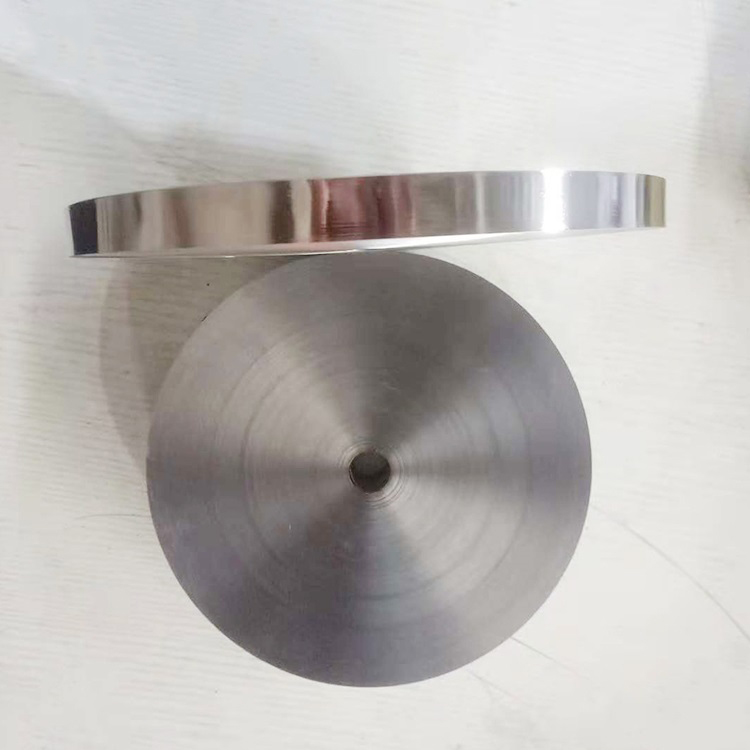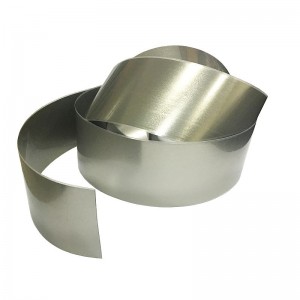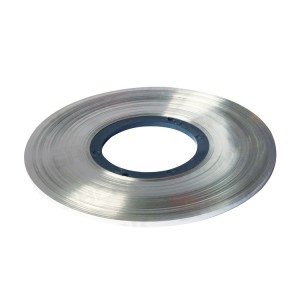Fe-Based 1K101 Amorphous Ribbon
Description
| Product Name | Fe-Based 1K101 Amorphous Ribbon |
| P/N | MLAR-2131 |
| Width | 5-80mm |
| Thickness | 25-35μm |
| Saturation magnetic induction | 1.56 Bs (T) |
| Coercivity | 2.4 Hc (A/m) |
| Resistivity | 1.30 (μΩ·m ) |
| Magnetostriction coefficient | 27 λs (ppm) |
| Curie temperature | 410 Tc (℃) |
| Crystallization temperature | 535 Tx (℃) |
| Density | 7.18 ρ (g/cm3) |
| Hardness | 960 Hv (kg/mm2) |
| Thermal expansion coefficient | 7.6 (ppm/℃) |
Application
● Mid-frequency power transformer core, distribution transformer core
● Toroidal uncut cores for smooth filtered output inductors and differential mode input inductors for switching power supplies
● Noise suppression in car stereos, toroidal uncut cores for car navigation system chokes
● Ring-cut cores for PFC power factor correction in air conditioning and plasma TVs
● High frequency rectangular cut cores for output inductors and transformers for switching power supplies, uninterruptible power supplies, etc.
● Toroidal, uncut cores for IGBTs, MOSFETs and GTOs pulse transformers
● High power density variable speed motors, stators and rotors for generators
Features
● Highest saturation magnetic induction among amorphous alloys-reduce components size
● Low coercivity- Improve components efficiency
● Variable Magnetic flux rate – By different core heat treatment processes to meet the requirements of different applications
● Good temperature stability- Can work at -55°C -130°C for long periods of time
● Cores used in transformers are 75% more energy efficient than S9 silicon steel cores in terms of no-load losses and 25% more energy °C efficient in terms of load losses
● Short strip production process and low production cost (see Fig. 1.1)
● The strip has a special microstructure which determines its excellent magnetic properties (Fig. 1.2) and performance stability.
● The composition and process parameters of the strip can be quickly adjusted to meet different usage requirements.
● For new energy solar grid-connected inverters

Figure 1.1 Amorphous ribbon production process

Figure 1.2 Bs versus Hc of different soft magnetic materials
Material comparison
| Performance Comparison of Fe-based amorphous alloys with cold-rolled silicon steel | ||
|
Basic parameters |
Fe-based amorphous alloys |
Cold-rolled silicon steel(0.2mm) |
| Saturation magnetic induction Bs (T) |
1.56 |
2.03 |
| Coercivity Hc (A/m) | 2.4 | 25 |
| Core losses(P400HZ/1.0T)(W/kg) | 2 | 7.5 |
| Core losses(P1000HZ/1.0T)(W/kg) | 5 | 25 |
| Core losses(P5000HZ/0.6T)(W/kg) | 20 | >150 |
| Core losses(P10000HZ/0.3T)(W/kg) | 20 | >100 |
| Maximum magnetic permeability (μm) | 45X104 | 4X104 |
| Resistivity (mW-cm) | 130 | 47 |
| Curie temperature(℃) | 400 | 740 |















